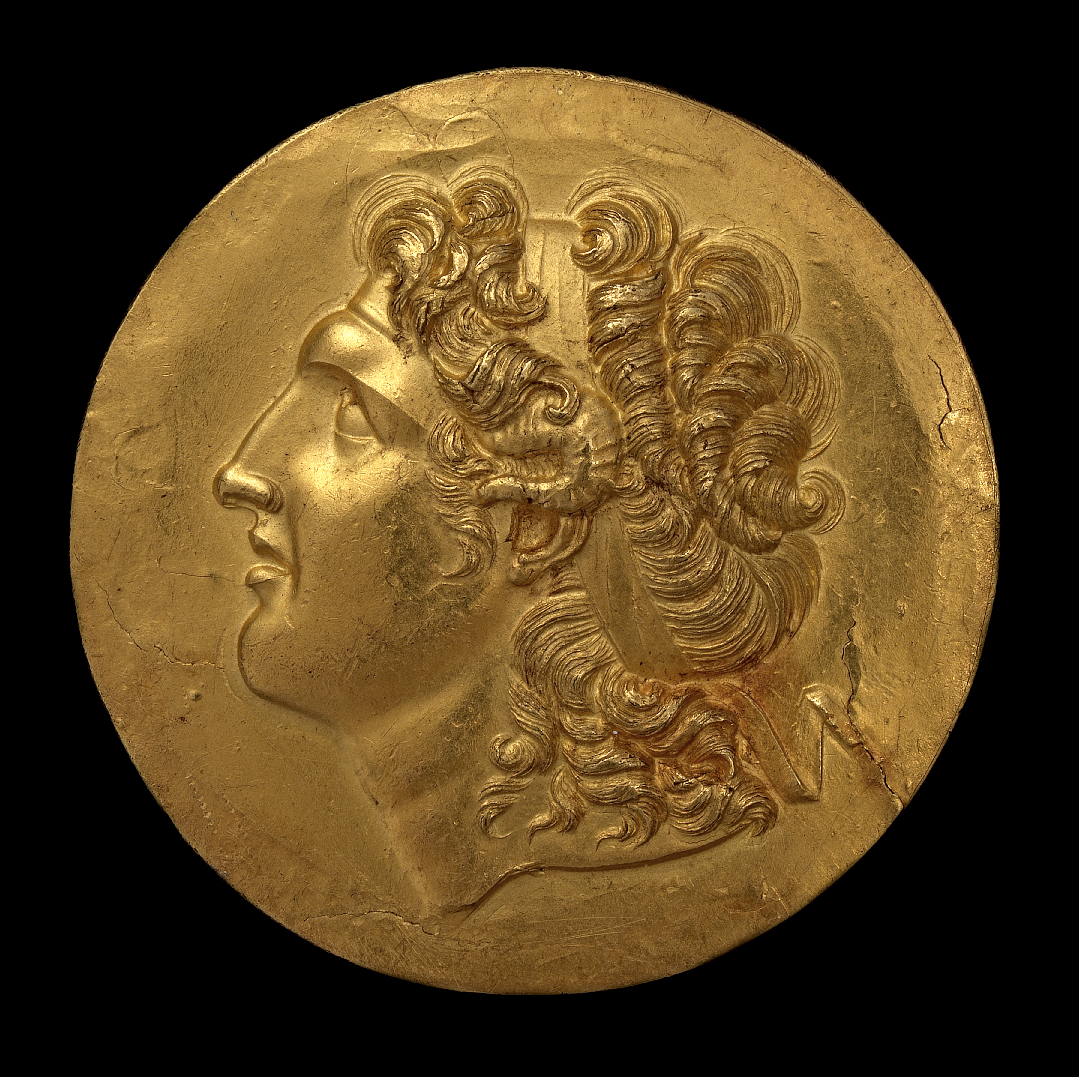
- East of the Roman Empire, Beroia (provincial capital of Macedonia), 3rd century AD
- Gold
- Inv. 2428
Aboukir ‘Medallion’
The obverse shows the diademed head of Alexander the Great (r. 336–323 BC). This posthumous and idealized portrait includes symbols of Alexander’s deification, one of which is the ram’s horn, characteristic of the Egyptian god Amon. This iconography derives from the type of coin introduced by one of Alexander’s immediate successors, King Lysimachos of Thrace (297–281 BC).
The reverse shows a hunting scene, with the hunter’s spear piercing a wild boar that is being attacked by two dogs. The legend ‘King Alexander’, which appears to the left and above, identifies the hunter. The ‘medallion’ is part of a treasure including twenty similar pieces found in Aboukir, Egypt, in 1902. The designation ‘medallion’ is purely a matter of convention based on the piece’s morphology and size, as the use given to such pieces cannot be definitively established.
Found at Aboukir, 1902; Mme Sinadino, Alexandria; Pierpont Morgan Library, New York. Acquired by Calouste Gulbenkian from the Pierpont Morgan Library, New York, 1949.
Diam. 54 mm; 96.3 g
Lisbon 2001
Calouste Gulbenkian Museum. Lisbon: Calouste Gulbenkian Museum, 2001, p. 27, cat. 12.
Dahmen 2013
Karsten Dahmen, Medallions from Aboukir in the Calouste Gulbenkian Museum. Lisbon: Calouste Gulbenkian Museum, 2013.